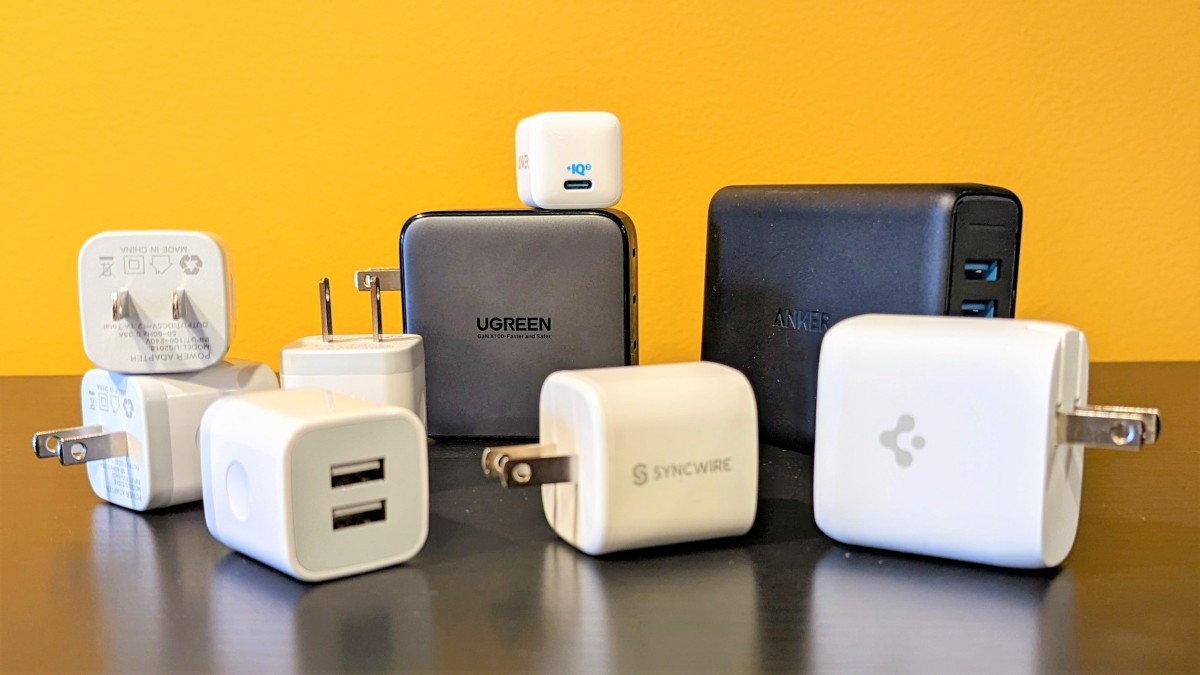
Understanding Fast Charging Protocols
Before choosing the best fast charger blocks, understanding the different fast charging protocols is crucial. These protocols ensure your device receives the optimal amount of power for rapid charging.
USB Power Delivery (USB PD)
Widely supported by most modern devices, including Android smartphones, laptops, and tablets. Charging speeds range from 5W to 100W or more, depending on device and charger capabilities.
Programmable Power Supply (PPS)
High-end devices like the Samsung Galaxy series support PPS. This allows for more precise control over the charging current, resulting in faster and more efficient charging.
Qualcomm QuickCharge
Commonly used by many Android manufacturers, including Samsung, OnePlus, and Motorola. Supports various charging speeds, typically ranging from 18W to 100W.
OnePlus SuperVOOC and WarpCharge
Exclusive to OnePlus devices, offering extremely high charging speeds up to 125W.
Samsung Super Fast Charging
Samsung's proprietary fast charging technology supports speeds up to 45W, making it one of the fastest charging standards available.
Key Features to Look for in a Fast Charger Block
When selecting the best fast charger block for your Android device, consider several key features:
Wattage
The wattage of the charger determines how quickly your device will charge. Common wattages include 30W, 45W, 60W, and 100W. Higher wattages generally result in faster charging times.
Number of Ports
A multi-port charger is convenient for charging multiple devices simultaneously. Look for chargers with multiple USB-C and USB-A ports to accommodate different devices.
Charging Standards
Ensure the charger supports the fast charging protocol used by your device. For example, if you have a Samsung Galaxy series phone, you'll need a charger that supports Samsung Super Fast Charging.
Gallium Nitride (GaN) Technology
GaN chargers are known for their compact design and better power efficiency. Ideal for travel or those who prefer a smaller charger.
Smart Power Allocation
Some chargers feature smart power allocation technology, which dynamically adjusts the power distribution among multiple devices to maximize efficiency.
Certifications
Look for certifications like USB PD 3.0 or PPS to ensure compatibility with your device's charging standards.
Best Fast Charger Blocks for Android
Based on the criteria mentioned above, here are some of the best fast charger blocks available in 2024:
Anker 45W 313 Charger
An excellent choice for those with Samsung Galaxy series phones that support 45W Super Fast Charging. It also supports USB PD, PPS, and QuickCharge protocols, making it versatile for various devices.
USB C Fast Charger Block: 160W GaN Charger
This 160W GaN charger is a high-capacity option ideal for heavy users. It features six USB-C ports and supports PD 3.0, making it suitable for charging multiple devices simultaneously. The compact design and high wattage make it a great choice for those who need to charge multiple devices quickly.
Dual USB Wall Charger by Costyle
A budget-friendly option that supports adaptive fast charging up to 30W. Compatible with a wide range of devices including iPhones and Samsung Galaxy series phones. The compact design and affordable price make it an excellent choice for those on a budget.
Mophie Speedport 30 USB-C GaN
Another premium option that supports up to 30W charging. It features a smart chip that ensures the right wattage is delivered to your device at all times. The compact design and high-quality build make it a great choice for those who value portability and efficiency.
Spigen 120W 4-Port USB-C Charging Station
For those who need to charge multiple devices simultaneously, the Spigen 120W 4-Port USB-C charging station is an excellent option. It supports high-speed charging up to 120W and features four USB-C ports, making it ideal for heavy users.
Recommendations
- For Samsung Galaxy Series Users: Anker 45W 313 Charger
- For Heavy Users: USB C Fast Charger Block: 160W GaN Charger
- For Budget-Friendly Option: Dual USB Wall Charger by Costyle
- For Premium Portability: Mophie Speedport 30 USB-C GaN
- For Multi-Device Charging: Spigen 120W 4-Port USB-C Charging Station
By following these recommendations and considering the key features outlined above, you can find the perfect fast charger block to meet your Android device's charging needs.
